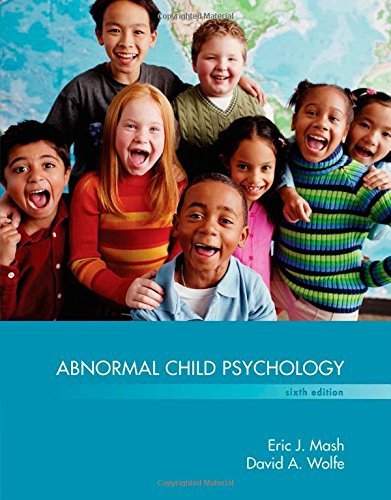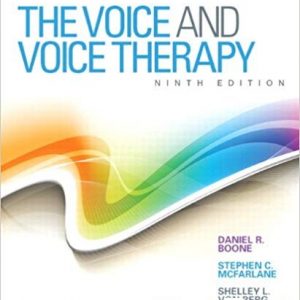This is completed downloadable of Abnormal Child Psychology Mash 6th Edition Test Bank

Product Details:
- ISBN-10 : 1337599158
- ISBN-13 : 978-1337599153
- Author:
Through a thoughtful and accurate balance of developmental, clinical-diagnostic, and experimental approaches to child and adolescent psychopathology, Eric Mash and David Wolfe’s ABNORMAL CHILD PSYCHOLOGY remains the most authoritative, scholarly, and comprehensive book in its market. This edition has been organized and updated to reflect DSM-5 categories, as well as dimensional approaches to classification and evidence-based assessment and treatment. Accessible to a broad range of readers, the book traces the developmental course of each disorder. It also shows how child psychopathology involves biological, psychological, and sociocultural factors interacting with a child’s environment. Case histories, case examples, and first-person accounts are at the heart of the text, illustrating the categorical and dimensional approaches used to describe disorders and bringing life to the theories discussed. The authors also consistently illustrate how troubled children behave in their natural settings: homes, schools, and communities.
Table of Content:
- Ch 1: Introduction to Normal and Abnormal Behavior in Children and Adolescents
- Historical Views and Breakthroughs
- What is Abnormal Behavior in Children and Adolescents?
- Risk and Resilience
- The Significance of Mental Health Problems among Children and Youths
- What Affects Rates and Expression of Mental Disorders? A Look at Some Key Factors
- Looking Ahead
- Study Resources
- Ch 2: Theories and Causes
- What is Causing Jorge’s Problems?
- Theoretical Foundations
- Developmental Considerations
- Biological Perspectives
- Psychological Perspectives
- Family, Social, and Cultural Perspectives
- Looking Ahead
- Study Resources
- Ch 3: Research
- A Scientific Approach
- The Research Process
- Methods of Studying Behavior
- Research Strategies
- Ethical and Pragmatic Issues
- Study Resources
- Ch 4: Assessment, Diagnosis, and Treatment
- Clinical Issues
- Assessing Disorders
- Classification and Diagnosis
- Treatment and Prevention
- New Directions
- Study Resources
- Ch 5: Intellectual Disability (Intellectual Developmental Disorder)
- Intelligence and Intellectual Disability
- Features of Intellectual Disabilities
- Developmental Course and Adult Outcomes
- Causes
- Prevention, Education, and Treatment
- Study Resources
- Ch 6: Autism Spectrum Disorder and Childhood-Onset Schizophrenia
- Autism Spectrum Disorder (ASD)
- DSM-5: Defining Features of ASD
- Core Deficits of ASD
- Associated Characteristics of ASD
- Prevalence and Course of ASD
- Causes of ASD
- Treatment of ASD
- Childhood-Onset Schizophrenia (COS)
- DSM-5: Defining Features of Schizophrenia
- Precursors and Comorbidities
- Causes and Treatment of COS
- Study Resources
- Ch 7: Communication and Learning Disorders
- Definitions and History
- Language Development
- Communication Disorders
- Specific Learning Disorder
- Study Resources
- Ch 8: Attention-Deficit/Hyperactivity Disorder (ADHD)
- Description and History
- Core Characteristics
- Associated Characteristics
- Accompanying Psychological Disorders and Symptoms
- Prevalence and Course
- Theories and Causes
- Treatment
- Study Resources
- Ch 9: Conduct Problems
- Description of Conduct Problems
- Context, Costs, and Perspectives
- DSM-5: Defining Features
- Associated Characteristics
- Accompanying Disorders and Symptoms
- Prevalence, Gender, and Course
- Causes
- Treatment and Prevention
- Study Resources
- Ch 10: Depressive and Bipolar Disorders
- Overview of Mood Disorders
- Depressive Disorders
- Major Depressive Disorder (MDD)
- Persistent Depressive Disorder [P-DD] (Dysthymia)
- Disruptive Mood Dysregulation Disorder (DMDD)
- Associated Characteristics of Depressive Disorders
- Theories of Depression
- Causes of Depression
- Treatment of Depression
- Bipolar Disorder (BP)
- Study Resources
- Ch 11: Anxiety and Obsessive-Compulsive Disorders
- Description of Anxiety Disorders
- Separation Anxiety Disorder
- Specific Phobia
- Social Anxiety Disorder (Social Phobia)
- Selective Mutism
- Panic Disorder and Agoraphobia
- Generalized Anxiety Disorder
- Obsessive-Compulsive and Related Disorders
- Associated Characteristics
- Gender, Ethnicity, and Culture
- Theories and Causes
- Treatment and Prevention
- Study Resources
- Ch 12: Trauma- and Stressor-Related Disorders
- History and Family Context
- Trauma, Stress, and Maltreatment: Defining Features
- Trauma and Stressor-Related Disorders
- Treatment and Prevention
- Study Resources
- Ch 13: Health-Related and Substance-Use Disorders
- History
- Sleep-Wake Disorders
- Elimination Disorders
- Chronic Illness
- Adolescent Substance-Use Disorders
- Study Resources
- Ch 14: Feeding and Eating Disorders
- How Eating Patterns Develop
- Obesity
- Feeding and Eating Disorders First Occurring in Infancy and Early Childhood
- Eating Disorders of Adolescence
- Study Resources
- Epilogue
- Glossary
- References
- Name Index
- Subject Index





